China to India Shipping Forwarder
Der ultimative Leitfaden
Shipping From China to India: The Ultimate Guide 2024
Inhaltsübersicht
India has been one of China’s key trading partners, with bilateral trade showing steady growth in recent years. According to the Global Trade Research Initiative, trade between China and India reached $118.4 billion during the 2023–2024 fiscal year, with an 8.7% increase in Indian exports to China . The top imports from China include electronics, machinery, chemicals, textiles, and plastics, emphasizing India’s reliance on Chinese goods.
For Indian importers, sourcing products from China offers a dual benefit of cost efficiency and access to diverse, high-quality goods. However, the shipping process can be complex, involving logistics challenges, customs regulations, and varying transit times. This guide is designed to help importers thoroughly understand the shipping process from China to India, covering costs, shipping options, and potential obstacles. With these insights, businesses can mitigate risks, reduce costs, and make more informed shipping decisions.
Please confirm if this section is satisfactory or needs adjustments. Once confirmed, I will proceed with the Freight Shipping Cost from China to India section.
Freight Shipping Cost from China to India
When shipping goods from China to India, importers can choose from three primary shipping methods, each catering to different needs in terms of speed, cost, and shipment size:
Luftfrachtversand
Air freight is the fastest option, suitable for time-sensitive shipments. Costs typically range from $3 to $6 per kilogram, depending on the weight, dimensions, and the season. Transit times are generally 3 bis 7 Tage.Seefracht Versand
Sea freight is the most economical choice for large shipments. Full Container Load (FCL) shipping for a 20-foot container to Indian ports like Mumbai or Chennai costs between $700 and $1,200, with transit times ranging from 15 to 30 days.Express-Versand
Express services like DHL, FedEx, and UPS are ideal for small parcels or urgent needs. Costs average $8 bis $15 pro Kilogrammmit Lieferzeiten von 3 bis 5 Tage.
Each option offers distinct advantages, and the choice depends on the shipment’s size, urgency, and budget. Importers can strategically balance speed and cost to optimize their supply chain.
Air Freight Shipping Cost from China to India
Air freight is a popular shipping method for goods requiring quick delivery or when sea freight is not a viable option. The costs for air freight vary based on shipment size, weight, and the chosen airline. Here’s an overview:
- Pricing Range: Air freight rates range from $3 to $6 per kilogram for shipments over 1000 kilograms. Smaller shipments might have slightly higher rates.
- Transitzeit: Air freight typically takes 3 bis 7 Tage, making it a fast and efficient option.
- Volume Discounts: Larger shipments often enjoy lower per-kilogram rates.
Below is a detailed cost table:
| Versand-Modus | Einheit | Preisspanne | Transitzeit |
|---|---|---|---|
| Air Freight (1000kgs+) to Mumbai Airport | Pro Kilogramm | $3.50 – $5.50 | 3-5 Days |
| Air Freight (1000kgs+) to Chennai Airport | Pro Kilogramm | $3.80 – $6.00 | 4-6 Days |
| Air Freight (1000kgs+) to Delhi Airport | Pro Kilogramm | $4.00 – $6.00 | 3-7 Days |
Air freight is best suited for high-value, time-sensitive products like electronics, fashion apparel, and pharmaceuticals. While it is more expensive than sea freight, the speed and reliability often justify the cost.
Vorteile und Nachteile der Luftfracht
Air freight offers unique advantages but also comes with limitations. Here’s a balanced look at its pros and cons to help importers decide whether it fits their needs.
Vorteile der Luftfracht
Geschwindigkeit:
Air freight is the fastest shipping method, ideal for urgent or time-sensitive shipments. Transit times are typically 3–7 days, significantly quicker than sea freight.Verlässlichkeit:
Airlines operate on precise schedules, reducing delays. This makes air freight highly dependable for businesses with strict delivery timelines.Sicherheit:
Airports have stringent security measures, reducing the risk of theft or damage, especially for high-value goods like electronics and luxury items.Globale Reichweite:
Air freight connects major airports across the globe, making it easier to transport goods to remote or inland locations in India.
Disadvantages of Air Freight
Kosten:
Air freight is significantly more expensive than sea freight, especially for bulky or heavy shipments, with rates ranging from $3 to $6 per kilogram.Begrenzte Kapazität:
Airlines impose strict size and weight limits, making air freight unsuitable for oversized goods or large quantities.Auswirkungen auf die Umwelt:
Air freight has a higher carbon footprint compared to other shipping methods, which may be a concern for environmentally conscious businesses.
Best Products for Air Freight
Air freight is ideal for high-value, lightweight, and time-sensitive goods such as electronics, fashion, pharmaceuticals, and perishable items.
Sea Freight Shipping Cost from China to India
Sea freight is the most cost-effective option for transporting large quantities of goods from China to India. While it is slower than air freight, it is the preferred choice for bulky shipments or when cost savings are a priority.
- Pricing Range: Full Container Load (FCL) shipping costs between $700 and $1,200 für einen 20-Fuß-Container und $1,200 to $2,000 for a 40-foot container, depending on the destination port and shipping season.
- Transitzeit: Transit times typically range from 15 to 30 days, depending on the departure and arrival ports.
Below is a detailed cost overview for FCL shipments:
| Ocean Shipping Cost From China to India | Kosten für den Versand |
|---|---|
| FCL (20-foot container) to Mumbai Port | $700 – $1,100 |
| FCL (40-foot container) to Mumbai Port | $1,200 – $1,800 |
| FCL (20-foot container) to Chennai Port | $750 – $1,200 |
| FCL (40-foot container) to Chennai Port | $1,300 – $2,000 |
Why Choose Sea Freight?
Sea freight is best for goods that are not time-sensitive, such as furniture, machinery, textiles, and raw materials. It offers excellent value for businesses looking to transport large volumes at a lower cost per unit.
Express Shipping Cost from China to India
Express shipping is the fastest and most convenient option for transporting small parcels or urgent shipments from China to India. Major express shipping providers like DHL, FedEx, and UPS offer reliable services with door-to-door delivery.
- Pricing Range: Express shipping costs typically range from $8 bis $15 pro Kilogramm, depending on the carrier and package weight.
- Transitzeit: Delivery times are usually between 3 bis 5 Tage, making it an excellent choice for time-sensitive shipments.
Below is a comparison of costs for different express shipping providers:
| Express Shipping Provider | Shipping Cost (per kg) | Transitzeit |
|---|---|---|
| DHL | $8 – $12 | 3-5 Tage |
| FedEx | $9 – $13 | 3-5 Tage |
| UPS | $10 – $15 | 3-5 Tage |
Why Choose Express Shipping?
Express shipping is perfect for businesses shipping samples, high-value products, or urgent small orders. While it is more expensive than air or sea freight, its speed and convenience make it an invaluable option for specific use cases.
Vorteile und Anwendungsfälle für den Expressversand
Express shipping offers unmatched speed and convenience, making it an essential option for specific shipping needs. Here are some key benefits and use cases:
Vorteile des Expressversands
Schnelle Lieferung
Express shipping guarantees delivery within 3-5 Tage, making it ideal for urgent shipments that require immediate attention, such as product launches or critical spare parts.Tür-zu-Tür-Service
With end-to-end logistics management, express shipping eliminates the need for multiple handlers, ensuring smooth and hassle-free delivery.Verfolgung in Echtzeit
Most express shipping providers offer robust tracking systems, allowing businesses to monitor shipments and provide accurate delivery timelines to customers.Verlässlichkeit
Express shipping services prioritize on-time delivery and package security, ensuring minimal delays and reducing the risk of lost or damaged goods.Custom Clearance Support
Providers like DHL, FedEx, and UPS handle customs documentation, simplifying the process for importers and ensuring compliance with local regulations.
Anwendungsfälle für den Expressversand
- Sample Shipments: Ideal for sending product samples quickly to potential clients or suppliers.
- E-Commerce-Bestellungen: Ensures timely delivery of small, high-value goods to end customers.
- Urgent Documents: Perfect for delivering important legal, financial, or business documents.
- High-Value Products: Suitable for electronics, luxury goods, and pharmaceuticals that require extra security and fast delivery.
- Saisonale Nachfrage: Effective for urgent restocking during peak sales seasons or promotions.
Door-to-Door Shipping from China to India
Door-to-door shipping simplifies the logistics process by offering a seamless service that covers the entire shipping journey—from the supplier’s location in China to the recipient’s address in India. This option is ideal for businesses seeking a hassle-free solution with minimal handling on their part.
Key Features of Door-to-Door Shipping
- All-Inclusive Service: The provider manages all aspects of shipping, including pickup, transportation, customs clearance, and final delivery.
- Bequemlichkeit: Businesses save time and resources by eliminating the need to coordinate with multiple service providers.
- Transparenz: Door-to-door services often include a detailed cost breakdown, avoiding unexpected charges.
- Flexibilität: Available for all major shipping modes—air, sea, and express—depending on the shipment’s urgency and size.
When to Use Door-to-Door Shipping
Door-to-door shipping is suitable for importers handling complex shipments, businesses with limited logistics knowledge, and customers requiring consistent service for both small and large orders.
DDP Shipping Cost From China to India
Delivered Duty Paid (DDP) shipping is a popular option for businesses looking for an all-inclusive solution where the seller or freight forwarder manages every aspect of the shipping process, including customs duties and taxes. DDP is available for all major shipping modes: air freight, sea freight, and express shipping.
Estimated Costs
- Luftfracht DDP: $7–$10 per kilogram, with transit times of 7-12 Tage.
- Seefracht DDP: $500–$800 per 20-foot container and $1,200–$1,800 per 40-foot container, with transit times of 25-35 Tage.
- Express Shipping DDP: $10–$18 per kilogram, with delivery in 5-7 Tage.
Key Benefits of DDP
- All costs, including customs duties and taxes, are handled by the shipping provider.
- Simplified process eliminates the need for the importer to manage customs clearance.
- Ideal for businesses with no prior experience in international shipping.
For precise DDP shipping costs tailored to your needs, we recommend contacting MBMLOG’s 24/7 online support team for detailed quotes and expert assistance.
How Long is DDP Shipping From China to India?
The transit time for DDP shipping depends on the shipping mode chosen. Below is an overview of the typical delivery times:
- Luftfracht DDP: Takes approximately 7 to 12 days, including customs clearance and last-mile delivery.
- Seefracht DDP: Usually takes 25 bis 35 Tage, as it involves longer transit times across ports and inland transportation.
- Express Shipping DDP: Offers the fastest delivery time of 5 bis 7 Tage, suitable for urgent shipments.
DDP shipping ensures a smooth process by integrating customs clearance and delivery into one service, making it a reliable option for businesses looking to streamline their logistics.
Would you like me to continue with the Vorteile der Tür-zu-Tür-Dienste section?
Vorteile der Tür-zu-Tür-Dienste
Door-to-door shipping is an efficient and hassle-free logistics solution, offering numerous benefits to importers. Below are the key advantages explained in detail:
Simplified Logistics Management
With door-to-door services, businesses no longer need to manage multiple providers or deal with different stages of the shipping process. The service provider takes full responsibility, ensuring end-to-end management from pickup to delivery.Kostentransparenz
Door-to-door shipping typically provides an all-inclusive cost structure, including customs duties, taxes, and transportation fees. This eliminates unexpected expenses, allowing businesses to budget accurately.Zeiteffizienz
By handling all aspects of the shipping process, door-to-door services save businesses valuable time. Importers can focus on core operations without worrying about coordinating shipments.Reduziertes Risiko
The service provider ensures compliance with customs regulations, reducing the risk of penalties, delays, or non-compliance issues. Additionally, the streamlined process minimizes the chances of miscommunication or lost shipments.Flexibility Across Modes
Door-to-door services are available for all shipping methods—air, sea, and express—allowing businesses to choose the most suitable option based on their needs, shipment size, and urgency.
Wichtige Überlegungen bei der Wahl des richtigen Tür-zu-Tür-Dienstes
Selecting the right door-to-door service provider is crucial to ensuring a smooth and cost-effective shipping experience. Here are some essential factors to consider:
Erfahrung und Reputation
Choose a provider with a proven track record in handling door-to-door shipments, particularly for routes between China and India. Experienced providers are more likely to manage complex processes efficiently and avoid delays or errors.Dienstabdeckung
Ensure the provider offers comprehensive coverage, including pickup in China, customs clearance in both countries, and delivery to your destination in India. Providers with an extensive network are better equipped to handle logistics seamlessly.Transparente Preisgestaltung
Look for a provider that offers clear, all-inclusive pricing without hidden fees. Request a detailed cost breakdown to understand what’s included, such as customs duties, taxes, and additional charges.Kundenbetreuung
Reliable and responsive customer support is essential. Choose a provider with a dedicated support team that can assist with real-time updates, resolve issues promptly, and provide expert guidance throughout the process.Flexibility in Shipping Modes
Opt for a provider that offers multiple shipping modes (air, sea, and express) under their door-to-door service. This allows you to select the best option based on your shipment size, urgency, and budget.
Understanding India Import Tax, Duties, and VAT Costs
When importing goods into India, understanding the tax structure is critical for budgeting and compliance. The primary costs include Zölle und Abgaben, Waren- und Dienstleistungssteuer (GST), and other applicable charges. Below is a breakdown of these components:
Zollabgabe:
Customs duties are calculated based on the product’s value, including insurance and freight costs (CIF). These rates vary depending on the product type and are set by the Indian Customs Tariff.GST:
Goods and Services Tax (GST) is levied on all imports and ranges from 5% to 28%, depending on the product category. This tax is applicable on the total value, including the customs duty.Sonstige Kosten:
Importers may also face additional costs, such as handling fees, port charges, or anti-dumping duties, depending on the nature of the goods.
Below is a table showcasing estimated duties and taxes for popular imported goods:
| Produkte | Zollabgaben (%) | GST (%) |
|---|---|---|
| Elektronik | 10 – 20 | 18 |
| Maschinenpark | 7.5 – 15 | 18 |
| Textilien | 10 | 12 |
| Chemikalien | 5 – 10 | 18 |
| Pharmazeutika | 5 | 12 |
| Möbel | 25 | 18 |
| Spielzeug | 20 | 12 |
| Kunststoffe | 10 – 15 | 18 |
| Automobile | 60 – 100 | 28 |
| Industrielle Ausrüstung | 7.5 – 15 | 18 |
| Schuhe | 20 | 12 |
| Kleidung | 10 | 12 |
| Metals | 7.5 – 10 | 18 |
| Kosmetika | 20 | 28 |
| Watches | 25 | 28 |
Understanding these costs ensures better pricing and planning, helping importers remain compliant and competitive.
Navigating Legal Compliance for Shipping to India
Legal compliance is a critical part of shipping goods from China to India. Failure to adhere to import regulations can result in delays, fines, or confiscation of goods. Here’s a brief guide to the legal requirements and certifications needed:
Key Legal Requirements
Import Export Code (IEC)
An IEC is mandatory for businesses in India to import goods. This unique 10-digit code must be obtained from the Directorate General of Foreign Trade (DGFT).Zollunterlagen
Importers must submit accurate documents, including the bill of lading, invoice, packing list, and bill of entry, to Indian Customs for clearance.Restricted & Prohibited Items
Certain items are restricted or prohibited for import into India. Ensure the shipment complies with the Foreign Trade Policy guidelines.Produktspezifische Zertifizierungen
Depending on the product, specific certifications might be required, such as:- BIS Certification for electronics and IT goods.
- FSSAI Certification for food and beverages.
- Pharmaceutical Licensing for medicines.
Anti-Dumping Regulations
Check whether the goods attract anti-dumping duties. This ensures fair trade practices and protects domestic industries.
Certifications Required for Common Products
| Produktkategorie | Certification/Compliance |
|---|---|
| Elektronik | BIS, RoHS |
| Spielzeug | ISI Certification |
| Chemikalien | MSDS (Material Safety Data Sheet) |
| Pharmazeutika | FDA Approval, Drug License |
| Lebensmittel | FSSAI Certification |
| Textilien | AZO Free Certificate |
| Industrielle Maschinen | CE Certification |
| Kosmetika | CSD (Cosmetic Standard Directive) |
Tips for Compliance
- Partner with experienced freight forwarders to manage documentation and certifications.
- Stay updated on India’s Foreign Trade Policy and amendments.
- Use customs brokers for smooth clearance.
Faktoren, die sich auf die Transitzeiten auswirken, und Abhilfestrategien
Shipping goods from China to India can be influenced by several factors, potentially causing delays. Below are the key factors and strategies to mitigate their impact:
1. Port Congestion
Auswirkungen: Busy ports, especially during peak seasons, can lead to significant delays in cargo handling.
Mitigation:
- Schedule shipments during off-peak periods.
- Use less congested ports for faster handling.
2. Customs Clearance Delays
Auswirkungen: Incomplete or inaccurate documentation can slow down customs processing.
Mitigation:
- Ensure all required documents are accurate and complete.
- Partner with customs brokers to expedite the process.
3. Adverse Weather Conditions
Auswirkungen: Extreme weather, such as monsoons or typhoons, can disrupt sea and air freight schedules.
Mitigation:
- Monitor weather forecasts and plan shipments accordingly.
- Use multimodal shipping options to reduce dependency on a single mode.
4. Shipping Mode Selection
Auswirkungen: Choosing the wrong mode of transport can lead to unnecessary delays, especially for time-sensitive shipments.
Mitigation:
- Opt for express or air freight for urgent shipments.
- Use sea freight for bulk goods with flexible delivery timelines.
5. Supply Chain Disruptions
Auswirkungen: Unforeseen events such as strikes, geopolitical issues, or global crises can cause interruptions.
Mitigation:
- Diversify suppliers and shipping routes.
- Maintain safety stock to mitigate delays in receiving goods.
Proper planning, proactive communication, and experienced freight partners can minimize transit time uncertainties and ensure timely delivery.
Key Ports in China and India for Shipping
Efficient port selection is critical for optimizing shipping costs and transit times. Below is an overview of the major ports in China and India, highlighting their advantages and strategic importance.
| Land | Hafen | Vorteile | Strategische Bedeutung |
|---|---|---|---|
| China | Hafen Shanghai | World’s busiest container port; excellent infrastructure | Key hub for exports to South Asia and India |
| China | Hafen Ningbo-Zhoushan | High cargo handling capacity; cost-effective for bulk goods | Handles diverse cargo, including textiles and machinery |
| China | Shenzhen Hafen | Proximity to manufacturing hubs; advanced logistics network | Crucial for electronics and high-value goods |
| China | Guangzhou Hafen | Strong connectivity with South China manufacturing bases | Preferred for chemical and heavy machinery exports |
| Indien | Mumbai (Nhava Sheva) | Largest container port in India; handles high volumes | Key entry point for Chinese imports into West India |
| Indien | Chennai Port | Major hub for southern India; diverse cargo handling | Ideal for automotive, electronics, and textiles |
| Indien | Hafen Mundra | Private port with high efficiency; modern facilities | Strategic for importers in northern and western India |
| Indien | Kolkata Port | Closest port to eastern India; gateway to landlocked states | Preferred for small-scale, regional distribution |
By leveraging the strengths of these ports, businesses can achieve better cost efficiencies and delivery timelines.
Major Chinese Ports for Exports to India
China’s ports play a pivotal role in global trade, with several key ports facilitating exports to India. These ports are equipped with advanced infrastructure, high cargo-handling capacity, and strategic geographical advantages.
| China Name des Hafens | Jährlicher Durchsatz (TEUs) | Strategische Bedeutung | Wichtigste Frachtarten |
|---|---|---|---|
| Hafen Shanghai | 47,3 Millionen | World’s largest container port; connects to major Indian ports | Elektronik, Maschinen, Textilien |
| Hafen Ningbo-Zhoushan | 31,1 Millionen | Cost-effective for bulk exports to India | Chemicals, raw materials, industrial goods |
| Shenzhen Hafen | 27,7 Millionen | Key hub for high-value goods; proximity to manufacturing hubs | Electronics, precision instruments |
| Guangzhou Hafen | 23.2 million | Strong connectivity with South China industries | Chemicals, automotive parts, heavy machinery |
| Hafen Qingdao | 23,7 Millionen | Vital for exports to eastern and southern India | Plastics, furniture, apparel |
| Tianjin Port | 21.0 million | Northern China’s export hub | Metals, machinery, textiles |
| Xiamen Port | 12.0 million | Proximity to smaller manufacturers | Footwear, small electronics, toys |
These ports ensure efficient cargo movement from manufacturing hubs in China to Indian destinations, supporting diverse industries and supply chains.
Major Indian Ports for Imports from China
India has several key ports that handle imports from China, providing strategic access to different regions of the country. These ports are equipped to manage diverse cargo types, ensuring smooth operations and efficient delivery.
| Indian Port Name | Jährlicher Durchsatz (TEUs) | Strategische Bedeutung | Wichtigste Frachtarten |
|---|---|---|---|
| Nhava Sheva (Mumbai) | 5.0 million | Largest container port; connects western India to global markets | Electronics, textiles, machinery |
| Chennai Port | 1.5 million | Main gateway for southern India; diverse cargo handling | Automotive parts, chemicals, electronics |
| Hafen Mundra | 6,5 Millionen | India’s largest private port; efficient operations | Industrial goods, heavy machinery, plastics |
| Kolkata Port | 0.8 million | Key entry point for eastern India and landlocked states | Textiles, small electronics, chemicals |
| Cochin Port | 0.6 million | Strategic for imports to southern coastal regions | Food items, furniture, raw materials |
| Visakhapatnam Port | 1.1 million | Gateway to central and southeastern India | Minerals, raw materials, fertilizers |
| Kandla Port | 1.3 million | Specializes in bulk and break-bulk cargo | Chemicals, petroleum products, industrial equipment |
These ports are crucial for ensuring that goods imported from China are distributed efficiently across India, serving industries such as automotive, electronics, textiles, and chemicals.
Major Routes from China to India
Shipping routes from China to India are strategically designed to connect key ports and optimize transit times. These routes involve a combination of sea, air, and multimodal transport depending on the type of goods, urgency, and cost considerations.
Übersicht der Schifffahrtsrouten
- Seefracht-Routen: The most common shipping route involves sailing from Chinese ports (e.g., Shanghai, Ningbo, Shenzhen) through the South China Sea, the Strait of Malacca, and finally to Indian ports like Mumbai, Chennai, or Mundra.
- Luftfracht-Routen: Air routes directly link major airports in China (e.g., Shanghai Pudong, Shenzhen Bao’an) to Indian hubs like Mumbai, Delhi, and Chennai.
- Express and Multimodal Routes: Combining air and road transport, these routes are ideal for faster delivery of smaller consignments.
Key Routes
| Route Type | Major Route | Vorteile | Herausforderungen |
|---|---|---|---|
| Seefracht | Shanghai Port → Strait of Malacca → Mumbai Port | Kostengünstig für Schüttgut | Longer transit time (15–30 days) |
| Seefracht | Ningbo Port → Singapore → Chennai Port | Reliable for southern India-bound shipments | Port congestion during peak seasons |
| Luftfracht | Shanghai Pudong Airport → Delhi Airport | Fast delivery for time-sensitive goods | Höhere Kosten im Vergleich zur Seefracht |
| Express-Versand | Shenzhen Airport → Mumbai Airport | Quick door-to-door delivery for smaller parcels | Expensive for heavier goods |
| Multimodal (Sea + Rail) | Ningbo Port → Mundra Port → Northern India | Reduces inland transport costs | Complex coordination across modes |
Comparing Routes
Kosten-Wirksamkeit:
Sea routes are the most economical option for large shipments, while air freight is better suited for high-value or urgent goods.Transitzeiten:
Air freight offers the fastest transit times (3–7 days), while sea freight takes longer (15–30 days), depending on the route and port of entry.Flexibilität:
Multimodal solutions provide flexibility for inland delivery but require careful planning to avoid delays.
Choosing the right route depends on shipment size, urgency, and budget.
Wie Sie den richtigen Spediteur für Ihre Bedürfnisse auswählen
Choosing the right freight forwarder is essential for a smooth and efficient shipping experience. A reliable freight forwarder can help businesses navigate complex logistics, customs regulations, and potential challenges. Here’s a quick guide to selecting the best partner:
Einführung
A good freight forwarder ensures timely delivery, cost optimization, and compliance with all necessary regulations. When shipping from China to India, it’s vital to assess the forwarder’s expertise, network, and customer service capabilities.
10 Key Criteria for Choosing a Freight Forwarder
Erfahrung und Reputation
Select a forwarder with extensive experience handling shipments between China and India. Positive reviews and testimonials are indicators of reliability.Umfassende Dienstleistungen
Ensure they offer end-to-end solutions, including customs clearance, documentation, and multimodal transport options.Globales Netzwerk
Look for a forwarder with a robust network of agents and partners in both China and India to ensure seamless coordination.Transparente Preisgestaltung
Choose a forwarder that provides clear, detailed quotes without hidden fees. Transparency in pricing helps in accurate budgeting.Expertise in Customs Regulations
A forwarder familiar with customs requirements for both countries can prevent delays and penalties.Technology and Tracking Tools
Opt for a forwarder offering advanced tracking systems to monitor shipments in real time.Specialization in Your Product Category
Ensure the forwarder has experience handling your specific product type, whether it’s electronics, machinery, or perishable goods.Flexibility in Shipping Modes
A good forwarder should offer flexibility across sea, air, and express freight, allowing you to choose the most suitable option.Kundenbetreuung
Reliable and responsive customer service ensures quick resolution of issues and smooth communication.Certifications and Compliance
Verify their certifications and adherence to international shipping standards, such as ISO 9001 or equivalent.
Selecting a freight forwarder based on these criteria will streamline your shipping process, reduce risks, and improve overall efficiency.
How to Ship from China to India: A Step-by-Step Guide
Shipping goods from China to India requires careful planning and execution. Here’s a step-by-step guide to streamline the process:
Schritt 1: Vorbereiten Ihrer Sendung
- Dokumentation: Ensure all required documents, such as the commercial invoice, packing list, bill of lading, and certificate of origin, are complete and accurate.
- Verpackung: Use durable and compliant packaging suitable for the mode of transport to prevent damage.
- Kennzeichnung: Clearly label goods with product details, origin, and destination to facilitate customs clearance.
Step 2: Choosing the Right Shipping Method
- Luftfracht: Ideal for high-value, time-sensitive goods.
- Seefracht: Cost-effective for bulky shipments.
- Express-Versand: Best for urgent small packages or samples.
Consider your budget, timeline, and product type when selecting the mode.
Step 3: Partnering with a Freight Forwarder
- Work with an experienced freight forwarder to handle logistics, customs clearance, and delivery.
- Ensure the forwarder offers real-time tracking and excellent customer support.
Step 4: Navigating Customs and Taxes
- Prepare for import taxes, customs duties, and GST applicable in India.
- Work with customs brokers to avoid delays and ensure compliance with regulations.
Step 5: Tracking Your Shipment
- Use the tracking tools provided by your freight forwarder or shipping carrier to monitor your shipment.
- Address any issues promptly, such as unexpected delays or documentation errors.
Restricted & Prohibited Items for Shipping from China to India
When shipping goods from China to India, it is crucial to be aware of the restrictions and prohibitions imposed by Indian customs. These regulations are in place to ensure safety, security, and compliance with local laws. Below is a brief overview of restricted and prohibited items, followed by a detailed table.
Key Points
Eingeschränkte Artikel:
These goods require special permits, licenses, or certifications for importation. Examples include pharmaceuticals, chemicals, and certain electronics.Verbotene Gegenstände:
These goods are entirely banned from importation into India. Examples include narcotics, counterfeit products, and hazardous materials.Dokumentation:
Ensure all required permits and compliance documents are prepared for restricted items to avoid fines or confiscation.
| Artikel | Eingeschränkt/Verboten | Special Requirements or Notes |
|---|---|---|
| Rauschgift | Verbotene | Illegal under Indian law |
| Gefälschte Waren | Verbotene | Strictly banned to protect intellectual property |
| Lithium-Batterien | Eingeschränkt | Requires special packaging and transport permits |
| Schusswaffen und Munition | Verbotene | Import not allowed without government approval |
| Pharmazeutika | Eingeschränkt | Requires Drug Controller General of India (DCGI) approval |
| Chemicals (Hazardous) | Eingeschränkt | MSDS (Material Safety Data Sheet) required |
| Used Electronics | Eingeschränkt | Import permit and clearance from Ministry of Environment |
| Pornografisches Material | Verbotene | Strictly banned under Indian customs laws |
| Ivory Products | Verbotene | Import of wildlife products is illegal |
| Lebensmittel | Eingeschränkt | FSSAI certification needed for edible goods |
| Gold and Silver (Unprocessed) | Eingeschränkt | Requires RBI and customs clearance |
| Cryptographic Devices | Eingeschränkt | Approval needed from the Ministry of Electronics |
| Plant Products | Eingeschränkt | Phytosanitary certification required |
| Lebende Tiere | Verbotene | Only allowed with specific government clearance |
| Sprengstoffe | Verbotene | Illegal under arms and explosives laws |
| Kulturelle Artefakte | Eingeschränkt | Approval required from Archaeological Survey of India |
By adhering to these regulations, importers can avoid unnecessary delays, penalties, and potential confiscation of goods.
FAQ: Shipping from China to India
Here are answers to some of the most common questions regarding shipping goods from China to India. This section aims to provide clarity and help importers make informed decisions.
1. How long does shipping from China to India take?
- Luftfracht: 3–7 days
- Seefracht: 15–30 days
- Express-Versand: 3–5 days
2. What are the main shipping options from China to India?
- Luftfracht: Suitable for time-sensitive and high-value goods.
- Seefracht: Ideal for bulky and cost-sensitive shipments.
- Express-Versand: Best for small packages or urgent deliveries.
3. Wie wähle ich den richtigen Spediteur für meinen Transportbedarf?
Look for a forwarder with experience, comprehensive services, transparent pricing, and a reliable network in both China and India.
4. What documents are required for shipping goods from China to India?
Zu den wichtigsten Dokumenten gehören:
- Handelsrechnung
- Packliste
- Konnossement oder Luftfrachtbrief
- Ursprungszeugnis
- Import Export Code (IEC)
5. What is the importance of packaging and labeling when shipping from China to India?
Proper packaging prevents damage during transit, while accurate labeling facilitates smooth customs clearance and avoids delays.
6. How does customs clearance work when importing from China to India?
Customs clearance involves submitting the necessary documents, paying applicable duties and taxes, and complying with import regulations. Working with a customs broker is recommended.
7. Welche Vorteile hat die Nutzung von Haus-zu-Haus-Versanddiensten?
- End-to-end management
- Vereinfachte Logistik
- Transparent pricing
- Customs compliance included
8. How can I track my shipment from China to India?
Use the tracking tools provided by your freight forwarder or shipping carrier to monitor your shipment in real-time and stay updated on its status.
Schlussfolgerung
Shipping goods from China to India can be a complex process, but with proper planning and the right guidance, it can be streamlined and cost-effective. This comprehensive guide has provided insights into shipping methods, costs, legal compliance, and strategies to avoid common pitfalls.
By understanding the available options—air freight, sea freight, express shipping, and door-to-door services—importers can make informed decisions that align with their business needs. Additionally, careful attention to customs regulations, packaging, and documentation ensures a smooth shipping experience.
Unter MBMLOG, we specialize in providing tailored logistics solutions to meet your unique requirements. With our 24/7 customer support, extensive global network, and expertise in shipping from China to India, we offer a one-stop service that simplifies the entire process. Our commitment to transparency, cost-effectiveness, and reliable delivery ensures that your goods arrive safely, on time, and within budget.
Let us help you navigate the complexities of international shipping with confidence. Contact MBMLOG today for the best logistics solutions at the most competitive rates.
Jetzt Anfrage senden
Unsere Dienstleistungen

Sea Freight Shipping from China to India
Profitieren Sie von Kosteneinsparungen mit unseren Seefrachtoptionen mit hoher Kapazität, ideal für große Sendungen ohne Eile.
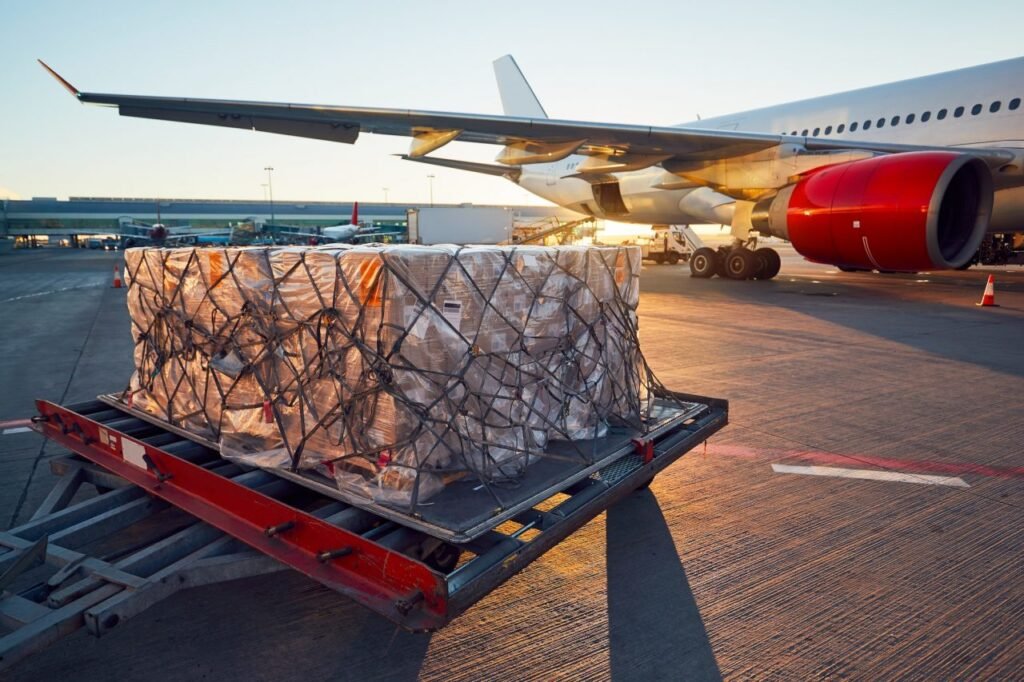
Air Freight Shipping from China to India
Beschleunigen Sie Ihre dringenden Sendungen mit unseren Luftfrachtdiensten, damit Ihr Unternehmen im Zeitplan bleibt.

Door to Door Shipping from China to India
Erleben Sie einen problemlosen Versand mit unserem Haus-zu-Haus-Service, der die gesamte Logistik von der Abholung bis zur Zustellung abdeckt.
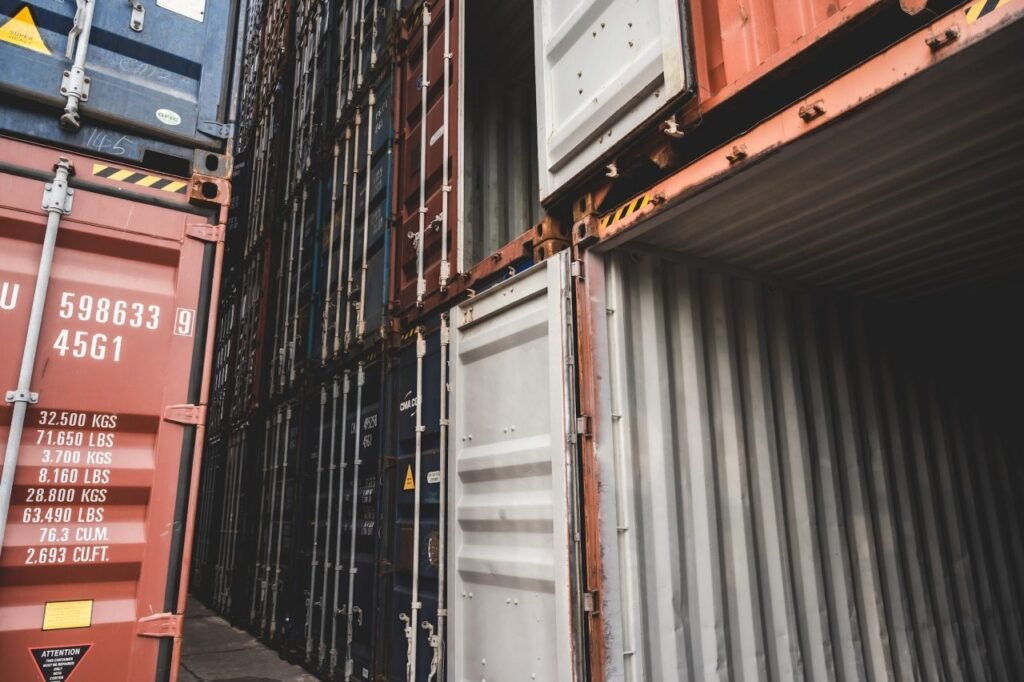
Cheapest Shipping From China to India
Maximieren Sie Ihr Budget mit unseren erschwinglichen Versandlösungen, die für einen kostengünstigen und zuverlässigen Transport sorgen.
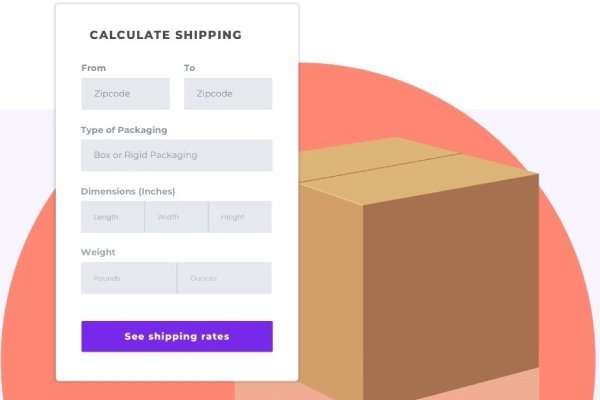
How long/much Shipping from China to India
Planen Sie effektiv mit unseren klaren und frühzeitigen Informationen über Zeitpläne und Kosten, die Ihnen bei der Entscheidungsfindung helfen.
FCL-Versand von China nach Indien
Mbmlogs FCL-Versanddienst kann Ihre großen Sendungen mit Full Container Load (FCL) sichern und so sicherstellen, dass Ihre Fracht ohne Unterbrechungen zusammen reist - perfekt für Massengüter, die einen robusten Schutz benötigen.
LCL-Versand von China nach Indien
Profitieren Sie von der Flexibilität des Less than Container Load (LCL)-Versands, der es Ihnen ermöglicht, kleinere Sendungen häufiger zu verschicken und so Ihre Bestände effektiv zu verwalten, ohne dass Sie einen vollen Container füllen müssen.
Zusätzliche Dienstleistungen für den Versand von China nach Indien

Abholung & Lieferung
Optimieren Sie Ihre Logistik mit unseren zuverlässigen Abhol- und Zustelldiensten, die einen pünktlichen und effizienten Transport von Ihrer Haustür direkt zum Bestimmungsort gewährleisten und so die Betriebsgeschwindigkeit und Zuverlässigkeit erhöhen.

Lagerhaus
Nutzen Sie unsere sicheren und skalierbaren Lagerlösungen, um Ihre Waren sicher zu lagern. Wir bieten flexible Lageroptionen, die sich an Ihre geschäftlichen Anforderungen anpassen und die Bestandsverwaltung und Zugänglichkeit optimieren.

Frachtversicherung
Schützen Sie Ihre Investitionen mit einer umfassenden Frachtversicherung, die finanzielle Sicherheit und Ruhe vor möglichen Transportschäden oder -verlusten bietet und einen reibungslosen und risikofreien Versand gewährleistet.
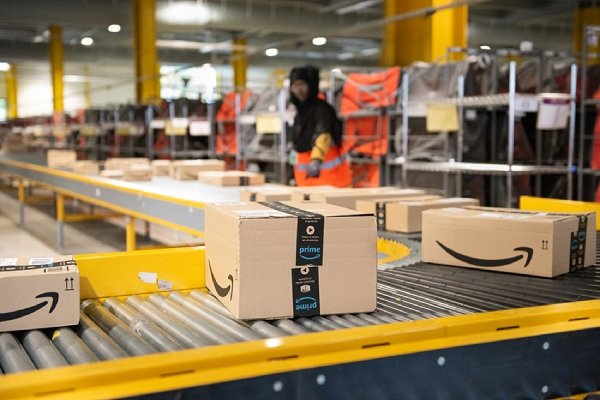
Versand an das FBA-Lager
Erleichtern Sie die nahtlose Integration in das Amazon-Netzwerk durch unsere spezialisierten Versanddienste an FBA-Lager, optimieren Sie Ihre Fulfillment-Strategie, reduzieren Sie die Bearbeitungszeiten und steigern Sie Ihr Umsatzpotenzial.

Zollabfertigung
Beschleunigen Sie Ihre internationalen Sendungen mit unseren fachkundigen Zollabfertigungsdiensten, minimieren Sie Verzögerungen und stellen Sie die Einhaltung aller globalen Handelsvorschriften sicher, indem Sie Ihre Import-/Exportprozesse vereinfachen.
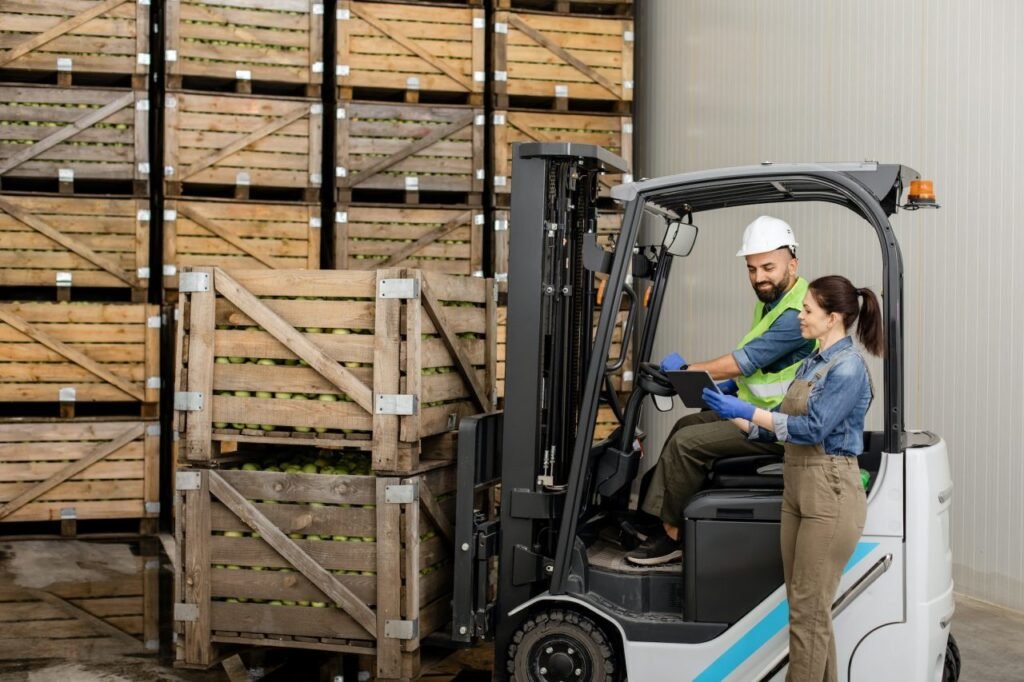
Inspektion der Ladung
Mit unseren gründlichen Verladekontrollen stellen wir die Qualität und den Zustand Ihrer Waren sicher, gewährleisten die Integrität der Sendung und erhöhen die allgemeine Kundenzufriedenheit, indem wir mögliche Probleme während des Transports verhindern.

Express-Versand
Beschleunigen Sie Ihre Lieferzeiten mit unseren Expressversandoptionen, die sich ideal für dringende Sendungen eignen, die einen schnellen und zuverlässigen Service erfordern. So können Sie enge Fristen einhalten und die Erwartungen Ihrer Kunden übertreffen.
Warum MBM wählen?
Erleben Sie die Vorteile eines reibungslosen Umzugs
Wenn Sie sich für mbmlog entscheiden, profitieren Sie von wettbewerbsfähigen Preisen, zuverlässigen und pünktlichen Lieferungen und einem 24/7-Experten-Support. Profitieren Sie von unserer 20-jährigen Erfahrung, der nahtlosen Zollabwicklung und der kostenlosen Lagerhaltung, damit Ihre Logistik effizient, kostengünstig und sorgenfrei ist.
20 Jahre Erfahrung
Mbmlog bietet unvergleichliche Logistiklösungen. Unsere umfangreiche Erfahrung gewährleistet effiziente, zuverlässige Dienstleistungen, die auf Ihre unterschiedlichen Versandanforderungen zugeschnitten sind.
Kostenloses Lagerhaus
Genießen Sie bis zu 30 Tage kostenlose Lagerhaltung bei mbmforwarding. Unsere sicheren, gut organisierten Einrichtungen sorgen dafür, dass Ihre Waren sicher gelagert werden.
24hx7 englischsprachiger Experten-Support
Wir bieten 24 Stunden am Tag, 7 Tage die Woche englischsprachigen Experten-Support, der eine nahtlose, effiziente Kommunikation und sofortige Hilfe für alle Ihre Logistikanforderungen gewährleistet.
Frachtversicherung
Unser Unternehmen bietet umfassende Frachtversicherungsdienste an, die Ihre Sendungen mit maßgeschneiderten Versicherungsoptionen schützen und für Sicherheit und Seelenfrieden während des Transports sorgen.
Über Tracking-Dienste
mbmforwarding's On-Tracking-Services bieten Echtzeit-Updates zu Ihren Sendungen und stellen sicher, dass Sie immer genaue Informationen über den Status Ihrer Fracht haben.
Professionelle Zollabfertigung
Unsere professionellen Zollabfertigungsdienste garantieren eine reibungslose und effiziente Abwicklung. Unser Expertenteam kümmert sich um die gesamte Dokumentation und gewährleistet die Einhaltung der Vorschriften.
